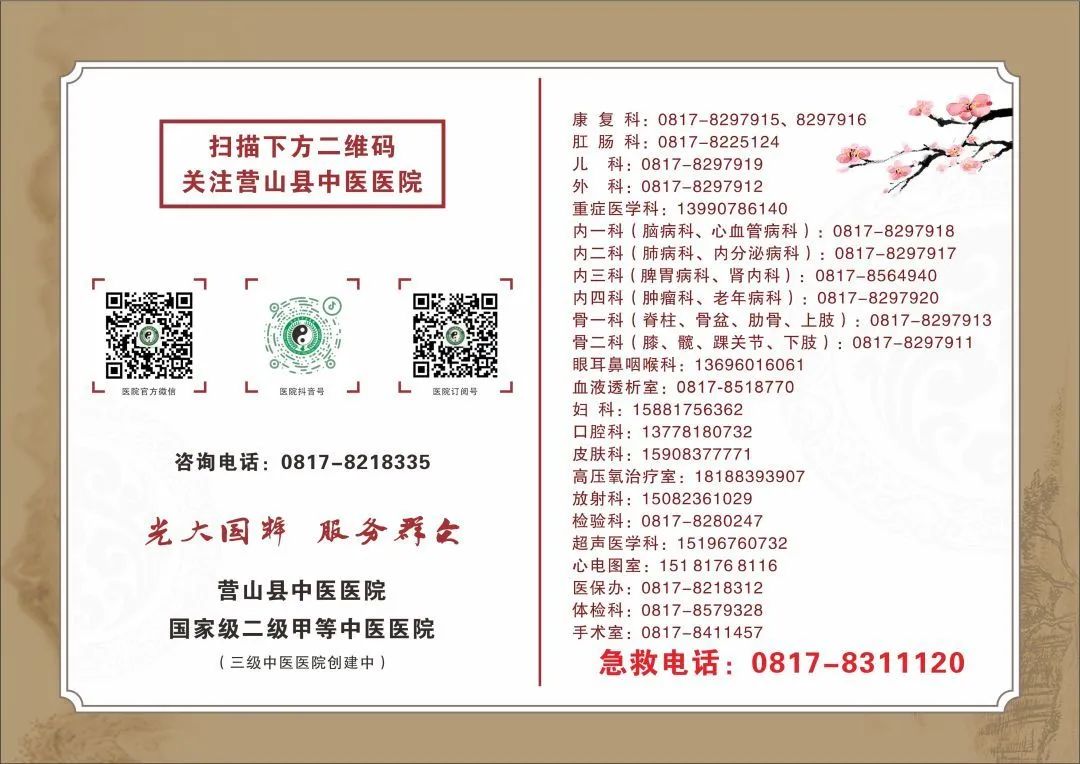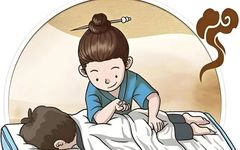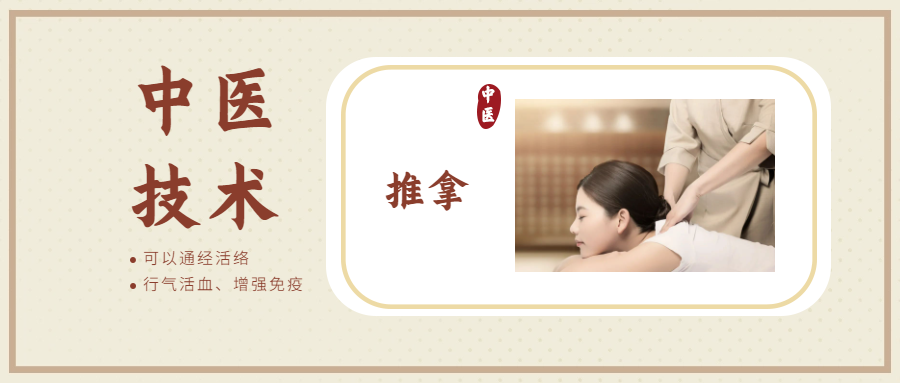
Traditional Chinese Medicine Techniques
Traditional Chinese Medicine (TCM) Tui Na (推拿) is an ancient and effective therapy characterized by its “simplicity, convenience, effectiveness, and affordability.” It is guided by TCM theories such as Yin-Yang, the Five Elements, and the meridian system, utilizing manual techniques to stimulate the body’s meridians and acupuncture points to harmonize Qi and blood, balance organ functions, and eliminate diseases. During Tui Na, practitioners skillfully apply techniques to adjust the patient’s body to its optimal state and enhance its self-healing abilities.
The Origin of Tui Na
The history of Tui Na is long, having evolved over time into a unique therapy. As early as in the “Su Wen: On the Appropriate Methods of Treatment,” it is recorded: “The central region is flat and moist, which is why all things are born. Its people eat a mixed diet without labor, hence they suffer from many diseases such as atrophy, cold, and heat. Therefore, the treatment should involve guidance and manipulation.” This indicates that ancient TCM already began using Tui Na techniques to treat diseases.
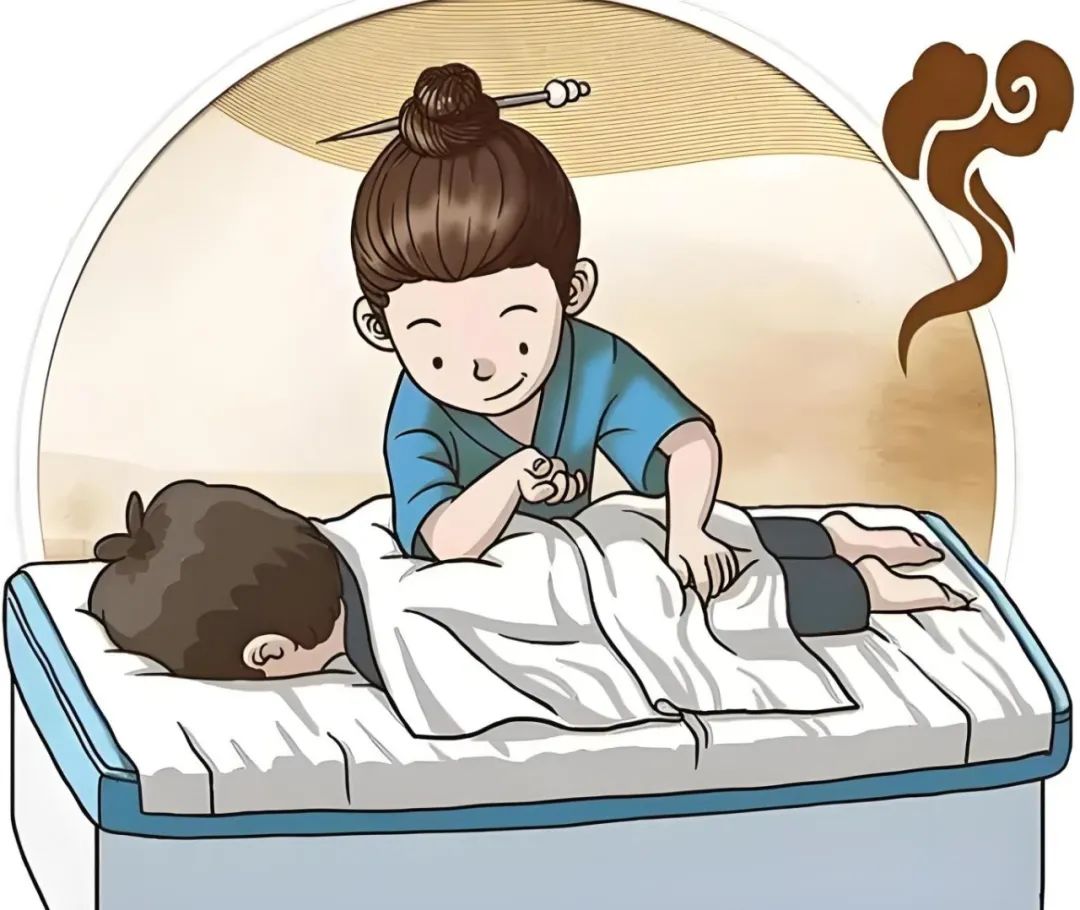
What is Tui Na?
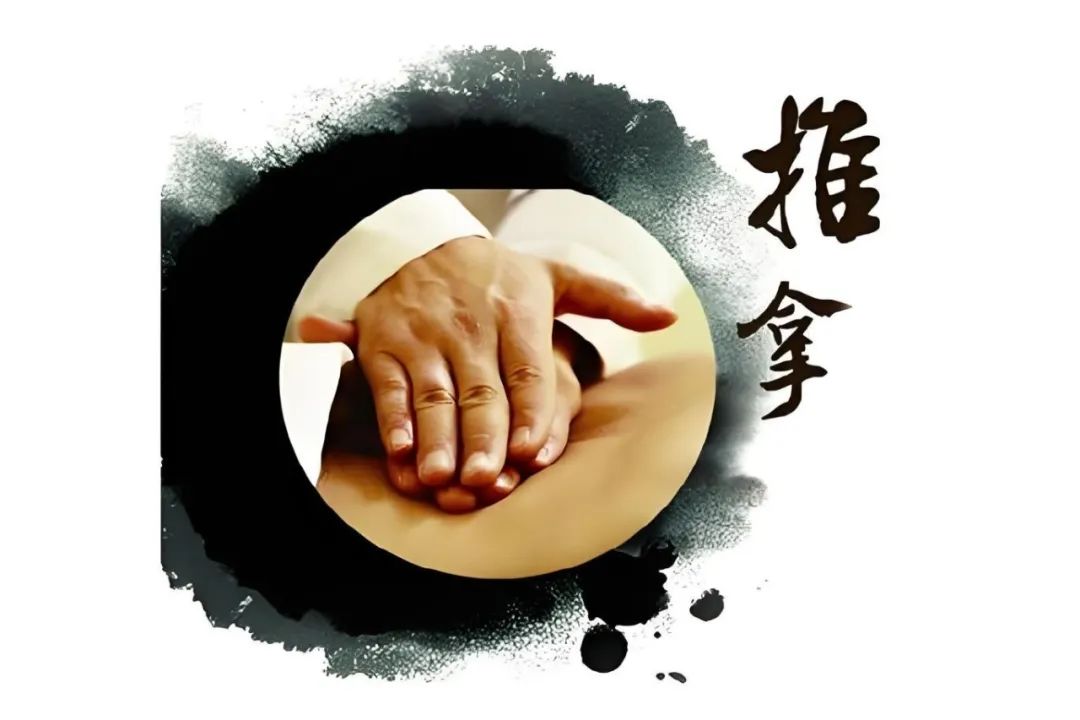
Tui Na is a green and healthy treatment method. During the therapy, practitioners use skilled techniques to apply pressure on the meridians and acupuncture points of the body, employing methods such as pushing, grasping, lifting, pinching, and rubbing. Tui Na is also known as “An Qiao” (按跷), “Qiao Yin” (跷引), and “An Wu” (按杌). It is a non-pharmaceutical natural therapy and physical therapy. Practitioners use their hands on the patient’s body surface, injured areas, specific acupoints, and painful spots, applying various techniques such as pushing, pressing, grasping, rubbing, pinching, tapping, and patting to achieve the effects of unblocking meridians, promoting Qi and blood circulation, alleviating pain, expelling pathogens, and harmonizing Yin and Yang.
Functions of Tui Na Unblocking Meridians
Unblocking Meridians
By stimulating peripheral nerves, Tui Na promotes blood and lymph circulation and the metabolic processes between tissues, coordinating the functions of various organs and improving the metabolic level of the body.
 Harmonizing Qi and Blood
Harmonizing Qi and Blood
The mechanical stimulation from Tui Na techniques converts mechanical energy into heat energy, raising the temperature of local tissues, promoting capillary dilation, improving blood and lymph circulation, reducing blood viscosity, lowering peripheral vascular resistance, and alleviating the burden on the heart, which can prevent cardiovascular diseases.
 Enhancing Immunity
Enhancing Immunity
Tui Na has anti-inflammatory, antipyretic, and immune-boosting effects, enhancing the body’s resistance to diseases. Because Tui Na can unblock meridians and promote the circulation of Qi and blood, it helps maintain the balance of Yin and Yang in the body, leading to muscle relaxation, joint flexibility, increased energy, and fatigue reduction, which is crucial for maintaining health.
 Resolving Adhesions
Resolving Adhesions
During Tui Na, unblocking meridians and harmonizing Qi and blood can help eliminate waste produced by the self-healing mechanism, preventing excessive waste from blocking the meridians and leading to tissue adhesions, which can result in new chronic diseases. For localized injuries causing inflammatory tissue adhesions, Tui Na can be used for diagnosis and treatment.
Applicable Populations
Orthopedic Diseases
Such as cervical spondylosis, stiff neck, lumbar disc herniation, shoulder periarthritis, soft tissue injuries, etc.
General Surgical Diseases
Such as postoperative intestinal adhesions, chronic prostatitis, chronic appendicitis, lower limb varicose veins, breast abscess, etc.
Internal Medicine Diseases
Such as gastric pain, insomnia, headaches, colds, chronic diarrhea, post-stroke sequelae, urinary retention, etc.
Gynecological Diseases
Such as menstrual disorders, dysmenorrhea, amenorrhea, chronic pelvic inflammatory disease, postpartum pubic symphysis separation, etc.
Pediatric Diseases
Such as fever in children, diarrhea, malnutrition, convulsions, constipation, prolapse of the rectum, intussusception, asthma, enuresis, night crying, sequelae of polio, etc.
Otorhinolaryngological Diseases
Such as rhinitis, deafness, tinnitus, strabismus, myopia, etc.
Various Sub-healthy Populations
Precautions
1. Tui Na should be performed 1-2 hours after meals, with each acupoint treated for 1-2 minutes until local warmth is felt.
2. The techniques should be gentle yet firm, with even frequency and amplitude, avoiding violence and opposing forces, generally performed 1-2 times daily.
3. When massaging the waist and abdomen, one should urinate first. Pregnant women should avoid abdominal massage.
4. Appropriate Tui Na mediums should be used, such as liquid paraffin, ginger juice, essential oils, or talcum powder, to reduce resistance, prevent abrasions, or enhance the massage effect.
5. If dizziness, nausea, severe pain, pallor, or cold limbs occur during Tui Na, the procedure should be stopped immediately.
END
